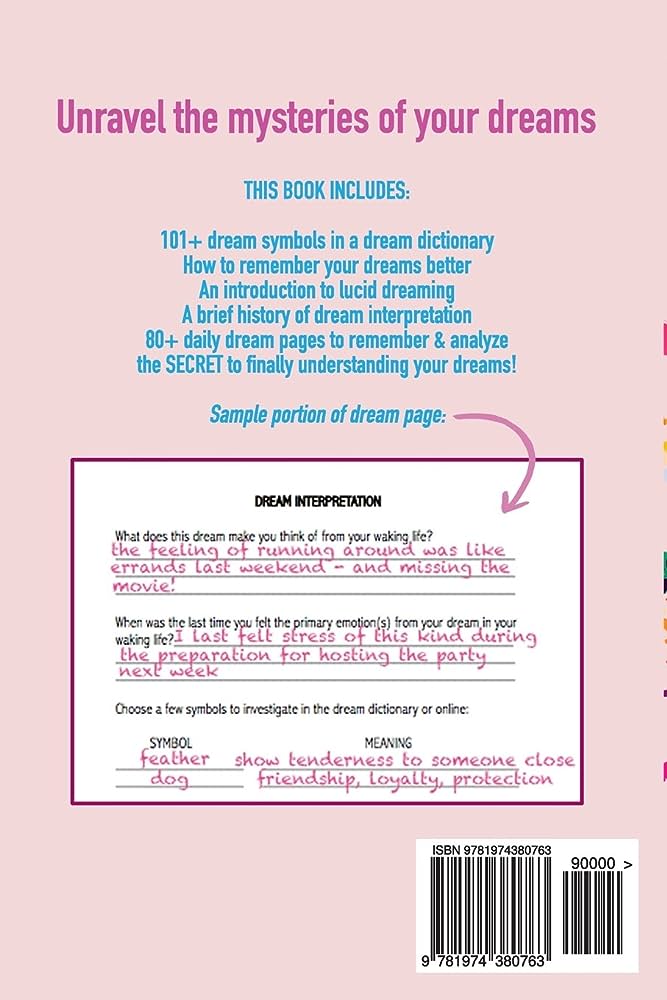Dreams have always fascinated human beings, as they offer a glimpse into the mysterious realm of the subconscious mind. These nightly journeys are filled with an assortment of images, events, and emotions, often leaving us bewildered upon waking. One of the key elements of dreams is the presence of symbols, which hold hidden meanings and messages. In this comprehensive guide, we will delve into the world of dream interpretation, unraveling the mysteries of dream symbols and providing insights into understanding these enigmatic nighttime experiences.
Understanding Dreams
Dreams are a natural part of the human sleep cycle, occurring during the Rapid Eye Movement (REM) phase of sleep. During this stage, the brain is highly active, and it creates various dream scenarios based on our experiences, emotions, and thoughts. Dreams can vary in intensity, ranging from vague fragments to vivid and elaborate narratives.
Scientists and psychologists have proposed various theories about the purpose and function of dreams. While some believe they serve as a mechanism for processing daily experiences and emotions, others see them as a gateway to the unconscious mind. Regardless of the theories, it is evident that dreams play a crucial role in our mental and emotional well-being.
The Role of Dream Symbols
Dream symbols are the building blocks of our nighttime narratives. They are representations of ideas, emotions, and experiences, often using familiar images and situations. The presence of symbols in dreams allows the subconscious mind to communicate with us in a symbolic language, revealing hidden aspects of our psyche and offering insights into our fears, desires, and unresolved issues.
Importance of Dream Interpretation
Dream interpretation is a valuable tool for gaining self-awareness and personal growth. By analyzing dream symbols and their meanings, we can gain deeper insights into our inner selves and better understand our emotions and behaviors. It can also help us process unresolved traumas and emotions, leading to psychological healing and improved well-being.
The Art of Dream Interpretation
Dream interpretation is an ancient practice that has evolved over time, drawing from various psychological and cultural perspectives. Some of the prominent approaches to dream analysis include:
- Freudian Approach: Sigmund Freud believed that dreams are a window into repressed desires and unconscious conflicts.
- Jungian Approach: Carl Jung focused on the collective unconscious and believed that dreams contain archetypal symbols shared by all humans.
- Cognitive Perspective: This approach views dreams as a product of the brain’s information processing and problem-solving abilities.
Keeping a Dream Journal
One of the essential tools for dream interpretation is maintaining a dream journal. Recording dreams as soon as you wake up can help capture the details and emotions while they are still fresh in your mind. Over time, patterns and recurring symbols may emerge, providing valuable insights into your subconscious mind.
When keeping a dream journal, make sure to include:
- Date and time of the dream
- Description of the dream events and symbols
- Emotional experiences during the dream
Identifying Personal Dream Symbols
While some dream symbols have universal meanings, others may be highly personal, influenced by individual experiences, culture, and beliefs. For instance, while water may symbolize emotions in general, the significance of water in a dream can vary based on personal associations with water-related experiences like swimming, boating, or fear of drowning.
Additionally, dreams often feature common archetypes such as the hero, the shadow, the anima/animus, and the wise old man/woman. Understanding these archetypes can help in deciphering their symbolic meanings within your dreams.
Decoding Dream Symbols
Dream symbols can be diverse and intriguing, ranging from ordinary objects to fantastical scenarios. Here are some common dream symbols and their possible interpretations:
- Water: Represents emotions, purification, and change.
- Flying and Falling: Signifies a sense of freedom or loss of control in waking life.
- Teeth: Symbolize communication, self-image, and personal power.
- Animals: Reflect instincts, behavior patterns, or qualities associated with the animal.
- Death and Dying: Signifies transformation, endings, or fear of mortality.
It’s important to consider the context of the dream and the dreamer’s emotions when interpreting symbols. For example, flying may represent freedom and empowerment in one dream, while it may signify anxiety or fear in another dream. The emotions experienced during the dream can provide valuable clues to the symbolism’s interpretation.
The Influence of Colors in Dreams
Colors in dreams can convey powerful emotions and associations. Here are some common interpretations of colors in dreams:
- Red: Represents strong emotions such as passion, anger, or danger.
- Blue: Symbolizes tranquility, peace, or sadness.
- Green: Signifies growth, harmony, or envy.
Recurring Dreams and Their Significance
Recurring dreams are dreams that repeat over time, often with similar themes or symbols. These dreams can indicate unresolved issues or deep-seated emotions that the dreamer needs to address. Paying attention to recurring dreams can provide valuable insights into persistent life challenges and personal growth opportunities.
Techniques for Dream Analysis
Various techniques can aid in the interpretation of dreams:
- Association and Amplification: Exploring personal associations and amplifying dream elements to gain deeper insights.
- Active Imagination: Engaging with dream symbols through active visualization and dialogue.
- Gestalt Techniques: Acting out dream symbols and scenarios to gain a deeper understanding.
- Role-Playing and Dream Characters: Embodying dream characters to explore their perspectives and meanings.
- Integration and Interpretation: Combining various approaches to achieve a comprehensive interpretation.
The Cultural and Historical Aspects of Dream Symbols
Dream interpretation has been practiced for millennia across different cultures and civilizations. In ancient cultures, dreams were often regarded as messages from the divine or portals to the spirit world.
For example, ancient Egyptians and Mesopotamians believed that dreams carried significant meanings and sought guidance from dream interpreters to make important decisions. Native American and indigenous cultures also hold strong beliefs in the power of dreams and their connection to the spiritual realm.
In modern times, the influence of media and entertainment has led to an increased interest in dreams and their interpretation. Online communities and forums have become platforms for dream sharing and seeking collective insights into dream symbols.
Lucid Dreaming and Control
Lucid dreaming is a state in which the dreamer becomes aware that they are dreaming. This heightened awareness allows the dreamer to control and manipulate the dream environment and events. Lucid dreaming can be a powerful tool for self-exploration and personal growth.
Techniques to induce lucid dreaming include reality checks, where dreamers perform regular checks to confirm whether they are awake or dreaming. Another method is the Mnemonic Induction of Lucid Dreams (MILD) technique, where the dreamer repeats an affirmation about becoming lucid while falling back asleep.
Lucid dreams can be utilized to overcome nightmares, confront fears, enhance creativity, and solve problems. However, maintaining control during lucid dreaming requires practice and self-awareness.
Dreams and Personal Growth
Dream interpretation can lead to profound personal growth and healing. By exploring the hidden aspects of our psyche and gaining insights into our subconscious, we can work towards resolving inner conflicts, understanding ourselves better, and making positive changes in our lives.
Common Dream Interpretation FAQs
Can Dreams Predict the Future?
While some people believe that dreams can predict future events, there is no scientific evidence to support this claim. Dreams are generally considered a reflection of our thoughts, emotions, and experiences, rather than a means of predicting the future.
Why Do Dreams Sometimes Repeat?
Repeating dreams often indicate unresolved issues or emotions that the dreamer needs to address. These dreams can persist until the underlying cause is recognized and resolved, leading to personal growth and healing.
How Do Medications Affect Dreaming?
Certain medications, such as antidepressants and sleep aids, can impact dreaming. Some medications may increase dream activity or cause vivid dreams, while others can suppress dream recall. It’s essential to discuss any significant changes in dream patterns with a healthcare professional.
Can Children and Animals Have Symbolic Dreams?
Both children and animals can experience dreams, and there is evidence to suggest that they may also have symbolic dreams. Like humans, their dreams can reflect their experiences, emotions, and subconscious mind.
What if I Can’t Remember My Dreams?

It’s common for some people to have difficulty recalling their dreams. Practicing relaxation techniques before sleep, keeping a dream journal, and maintaining a consistent sleep schedule can improve dream recall over time.
Conclusion
Dreams are an integral part of the human experience, offering a doorway to our subconscious minds. By understanding dream symbols and interpreting their meanings, we gain valuable insights into our emotions, thoughts, and desires. Dream interpretation is an art that can lead to personal growth, self-awareness, and psychological healing. Embrace the mystery of dreams, and explore the depths of your own subconscious through the enigmaticwhy not find out more world of dream symbols.

Welcome to my corner of the digital world. I am Evelyn Rivers, a passionate and dedicated professional psychologist with a profound fascination for the realm of dreams, their meanings, and their immense potential for emotional and spiritual healing. Through this website, I aim to illuminate the path to self-awareness, growth, and enlightenment, driven by the power of dreams and their significance in our lives. More about the author

